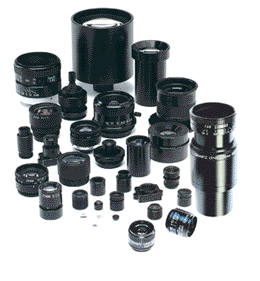High resolution lenses for machine vision — standard and custom lens design
Wavelengths Account For Visible Light Spectrum
High Resolution Lenses for machine vision, instrumentation, inspection and vibration-sensitive applications. Standard and custom hi-res lens assemblies.
The human eye sees light on the “visible light spectrum” and this is only a portion of the electromagnetic spectrum, which is visible to the human eye; the eye is a light receptor. Wavelengths on the visible light spectrum help determine the limit of visibility and light, which our eye can discern.
Scientifically speaking, the wavelength range of electromagnetic radiation, which typically ranges between 380 and 750 nanometers (nm) are what make up the visible light spectrum. There are, however, two wavelength limits of visible light and they fall between the upper and lower end points of 380 nm and 750 nm; the human eye will not respond to the electromagnetic radiation beyond those levels. This certainly doesn’t mean other wavelengths don’t exist, they do, but the human eye cannot discern them.
Although humans cannot see ambient light above or below the ranges noted, some animals have visibility that extends into the ultraviolet or infrared ranges. What the human eye perceives as color is hardwired into the optical system and the brain’s response to the electromagnetic wavelengths emitted; while wavelengths are an absolute, colors are not as they are perceived relative to our genetic optical makeup.
Without wavelengths of visible light colors, we would view the world in blacks, whites and shades of gray. The cells within the human eye that allow for perception of color are in the cone cells within the retina. The way our eyes perceive color is in response to the light and the wavelength of emitted light. As an example, wavelengths of 555 nm provide colors within the green spectrum. Composite colors (those not in the primary color spectrum) such as pinks or purples are a mixing of visible light wavelengths.
LED wavelengths operate on much the same way as the human retina as they work together to form differing wavelengths that emit varying colors in signs, flashlights, television and computer monitors.
Universe Optics manufactures lenses for diode laser collimators, CD and DVD players, laser pointers, laser levels, laser surface inspection systems and positioning and measuring equipment. Standard and custom laser lens assemblies are also available.
